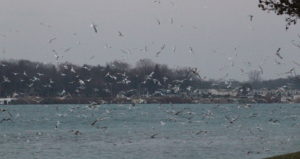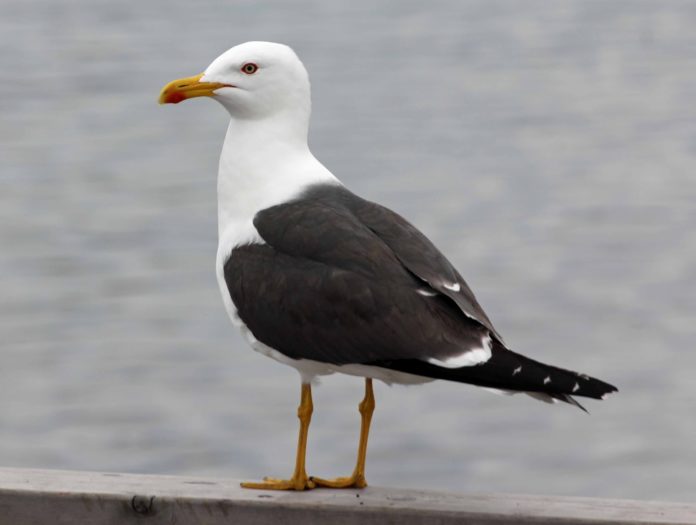By Larry Cornelis – President of the Sydenham Field Naturalists
To start with, Gull is the proper name for these beautiful birds in the ‘Laridae’ family (along with terns).

Seagull is a bit of a misnomer and we have Jonathon Livingston Seagull to thank for its common use.
Many species are seabirds but there are also gulls living in the prairies and the boreal forest.
Bonaparte’s Gull nests in spruce trees.
Of course, the Great Lakes are home to many gulls and they are a common sight locally.
There are approximately 50 species globally with 20 species being reported in Ontario.
A few of those are extremely rare sightings and most are only seen in the winter and during migration.
The two common species locally, are the herring gull and the ring-billed gull.
They both breed in the Great Lakes region.
They’re the big white birds after your fries under the Bluewater Bridge.
The herring gull is the larger of the 2 being 27” long with a wingspan of 58”.
That’s a big bird.

The ring-billed has a black ring around its yellow bill (hence the name) and is considerably smaller at 17” long and with a 48” wing span but still a relatively big bird.
Population levels of ring-billed gulls has really exploded in recent decades and is sometimes considered a nuisance.
Ring-billed gulls are the Walmart parking lot gulls.
They can be very vocal and their screaming and squawking annoys some people but delights others.
The title of this article suggests gulls are gorgeous and I think they are.
They are elegantly dressed in snow-white and gray with some black accents.
There are pure white gulls in the artic regions and species with black mantles (the tops of their wings and backs) such as the great black-backed gull.
I’m sure if you saw a gull for the first time, you would think it was a beautiful bird.
Their long wings enable them to soar gracefully, riding winds and updrafts but they are also comfortable walking on land and swimming in lakes, ponds, rivers and oceans.
Gulls are a challenge to identify for anyone but the very experienced birder.
While it’s a surprise to most people that there are numerous species to learn, there are also yearly plumages to recognize.
Depending on the species, it may take two, three or four years to reach adult plumage, with each age looking different.
Plus, there are hybrids.
To be able to identify all gulls, a birder would have to recognize at least 200 distinctive plumage patterns. And you thought identifying sparrows was confusing!

Gulls can easily be seen locally, but there are hotspots that birders flock to in order to see the most and rarest species.
The entire Niagara River, from Fort Erie to Niagara-on-the-Lake, but especially at the Falls and the Gorge, is one of these hotspots and is one of the best spots in the world to view gull species.
It’s a mecca for birders.
November and December are the best months to view the most species there.
I’ve gone many years at the end of November and first of December and it’s always been a thrilling and exciting experience.
One of my favourite activities to do there is watch the fly-by of thousands of gulls at dusk as they leave the
river to roost on the lake overnight.
At peak numbers, there can be over 40,000 Bonaparte’s gulls (a single species) on the river during the day.
Other hotspots include Toronto’s waterfront, Van Wagner’s Beach in Hamilton, Tip of Point Pelee, Wheatley Harbour, Lake Huron in Sarnia and the St Clair River.
If you have read my other articles, you may be coming to realize that our local area is an excellent area to take up the hobby of birdwatching.
For more details, visit: http://www.sydenhamfieldnaturalists.ca/
















